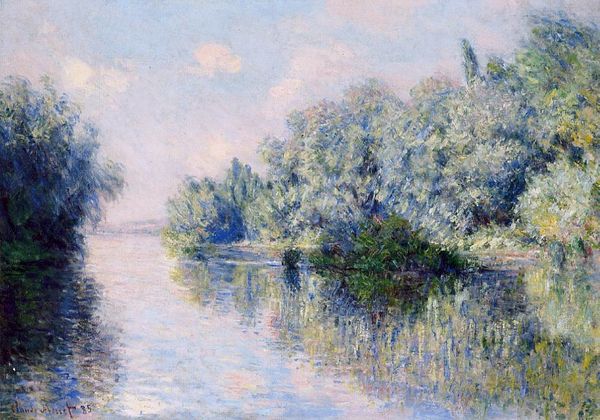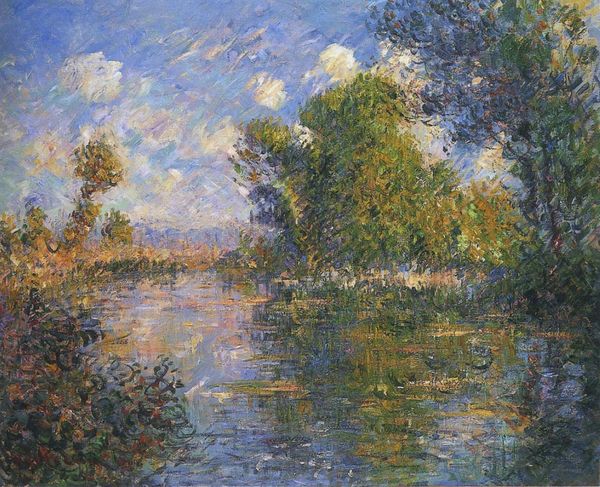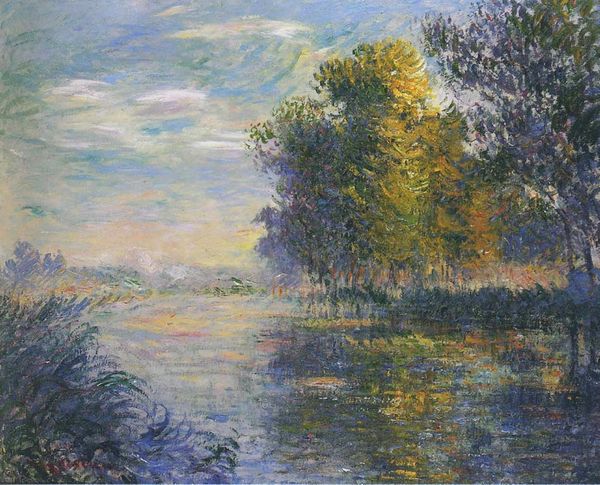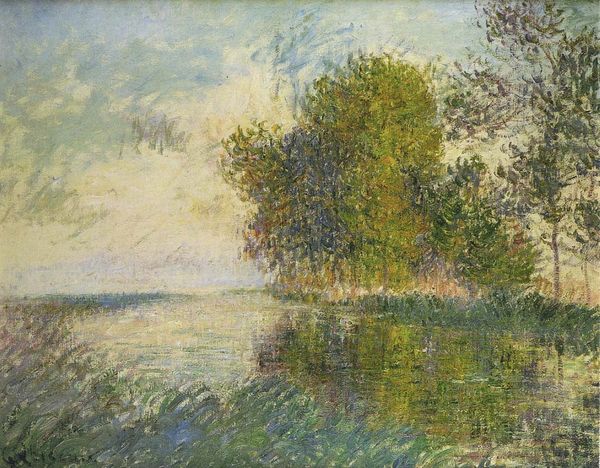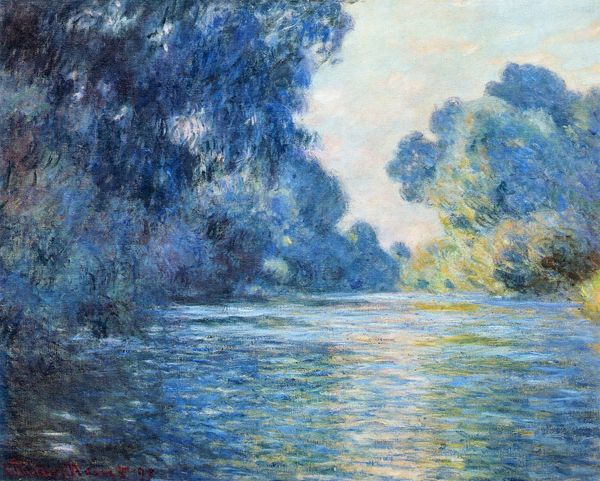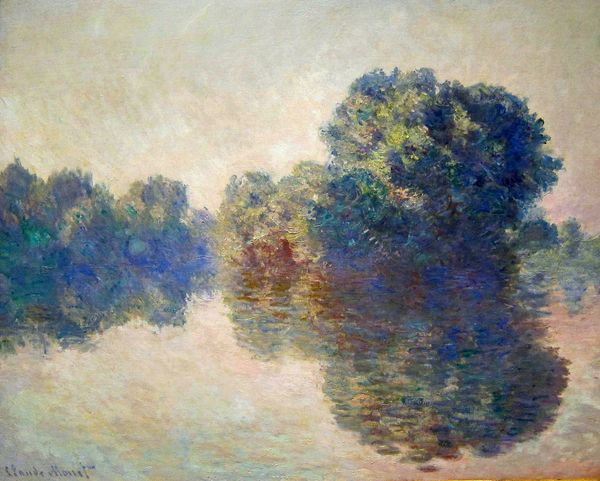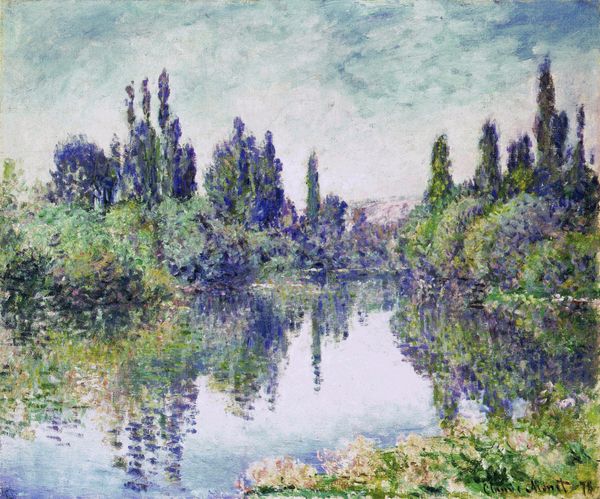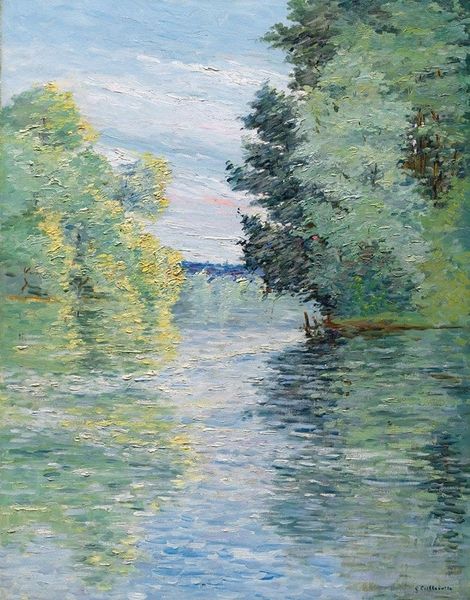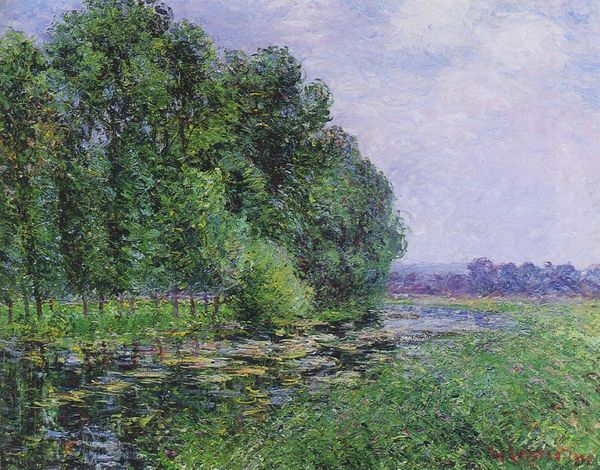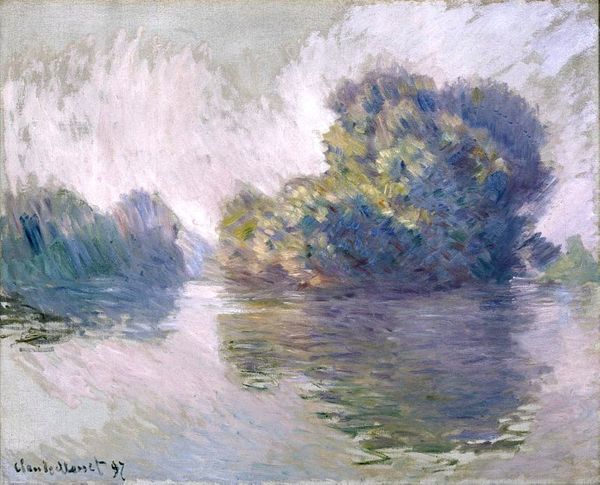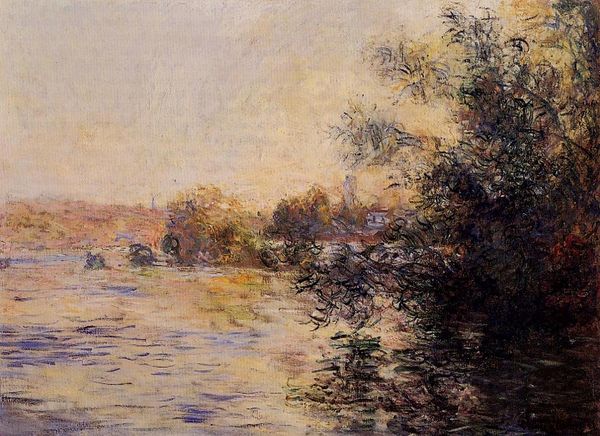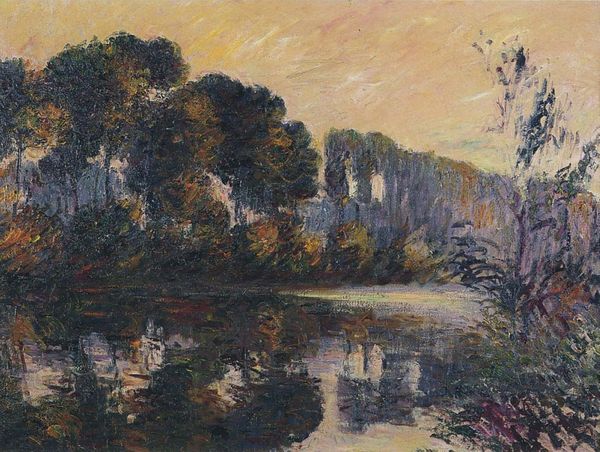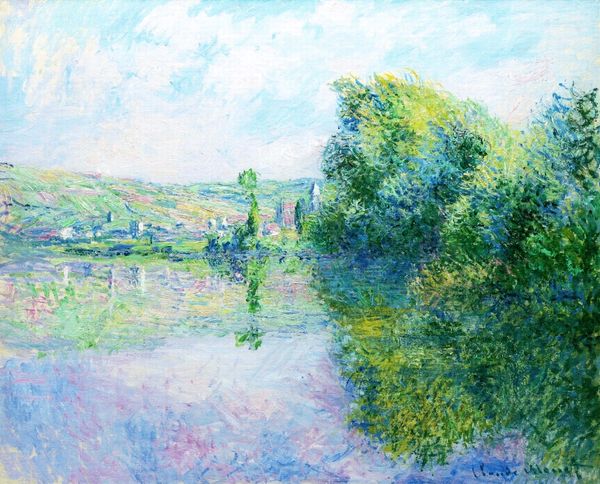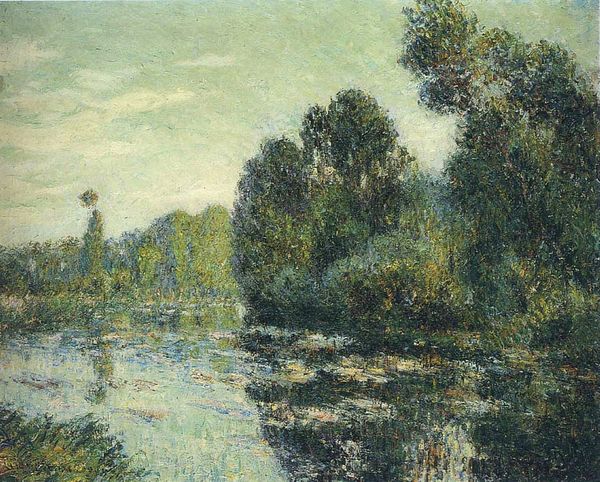
Copyright: Public domain
Curator: Welcome. We're looking at Claude Monet's "The Seine near Giverny," created in 1885. A beautiful example of Impressionism rendered in oil on canvas. Editor: My immediate sense is of tranquility, almost bordering on melancholy. The soft palette and blurry reflections create an ethereal atmosphere. Curator: Precisely! Monet's primary concern here is with the ephemeral nature of light and its transformative effects on the landscape. Notice how the impasto brushstrokes build up to suggest movement. Editor: I agree. However, I think we also need to consider Monet’s place within a burgeoning bourgeois society and the development of the Parisian suburbs. These scenes became accessible through burgeoning transport systems that allowed movement away from urban spaces. In fact, a rise in train usage allowed easier enjoyment of these "picturesque" destinations. Curator: An interesting contextual overlay. Certainly, leisure and access shift artistic perspectives. But the focus is really on how the visible world translates into pure optical sensation, not necessarily leisure pursuits. The subject matter of nature provides a setting in which he, and we, can examine color gradations, subtle tonal modulations, and fleeting moments in time. Editor: To see it merely as a study of light risks erasing the labor of this rendering and the fact that only particular members of society could enjoy these views or contemplate these subtleties. Was this view accessible to the working classes? I would posit that we risk sanitizing the socio-economic backdrop if we look only at surface-level beauty and artistic process. The shimmering brushwork and pretty pastels may offer pleasure to the viewer, but let's also investigate the societal changes that afforded such imagery to become mainstream. Curator: A fair point. It's always useful to consider multiple contexts. In any case, it seems clear that Monet created more than just an accurate visual recording, he fashioned a sensation of place. Editor: I couldn't agree more. Considering societal evolution and shifts allows us to view this not as merely a painting of beauty, but rather as an invitation to interrogate and reflect upon this specific historical period.
Comments
No comments
Be the first to comment and join the conversation on the ultimate creative platform.
